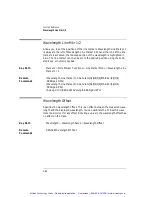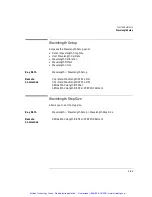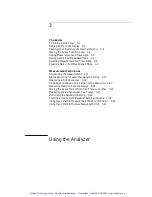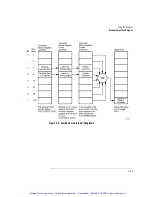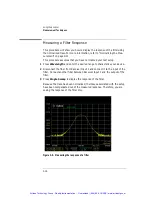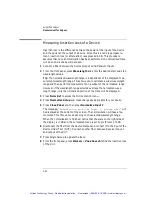
3-11
Using the Analyzer
Measurement Techniques
Normalizing the Measurement
It is very important to normalize your test setup in order to make accurate
measurements. Normalization removes amplitude changes caused by your test
setup and provides a known reference for comparison. This assures that mea-
surement results reflect only the characteristics of your device. Because TLS
power varies with the wavelength span, normalization also improves the
amplitude accuracy of the WDCA. This is accomplished by adjusting the TLS
power based on the specified normalization start and stop wavelengths. This
power will remain unchanged until another normalization is performed over a
different wavelength span.
N o t e
Normalization data is valid only for the sweep mode used during normalization.
For example, if Normal Sweep mode is the active sweep mode during
normalization, the normalized data will be valid only for Normal Sweep mode.
It is recommended that a normalization is performed every 8 hours.
1
Connect a fiber between the Source Output 1 and Receiver Input 1.
2
From the WDCA front panel, press
Norm Ref
to access the Normalization
menu.
3
Press
Normalize Setup
and make any changes applicable for your device.
From the setup panel, you can choose the start and stop normalized frequen-
cies as applicable for your device.
4
Press
Close Panel
and then press
Normalize Input 1
.
The message,
“Normalizing receiver input 1, please wait”
will
be displayed at the bottom of the screen. The normalization will take a few
moments. This time varies depending on the selected wavelength range.
Tip:
If you accidently start the normalization before connecting a patch cord
between the TLS output and receiver input, you can abort by pressing the
Preset key. The instrument will take approximately 10 seconds to respond.
5
When the normalization is complete, the software automatically takes a sweep.
6
Verify that the normalized trace is at 0 dB.
Artisan Technology Group - Quality Instrumentation ... Guaranteed | (888) 88-SOURCE | www.artisantg.com


